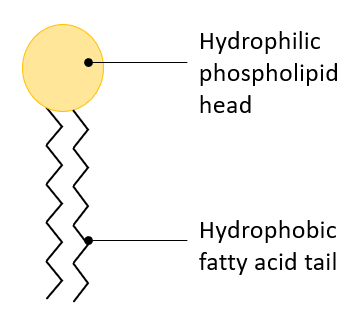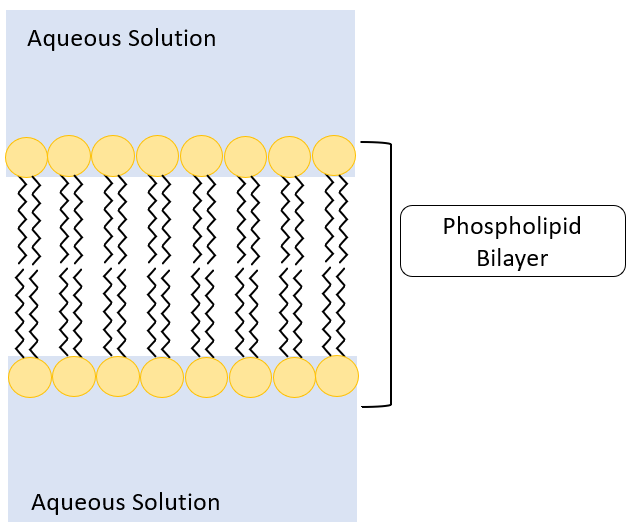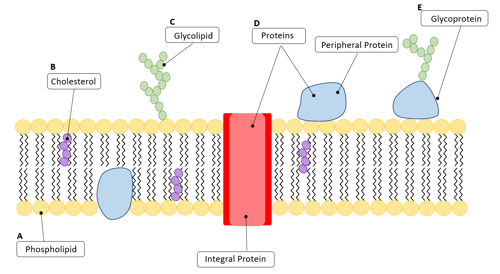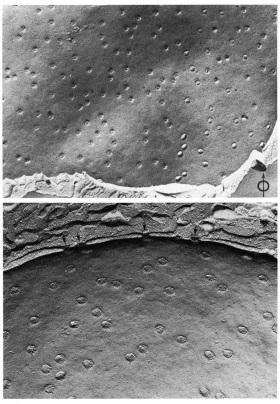This topic takes on average 55 minutes to read.
There are a number of interactive features in this resource:
 Biology
Biology
Cell membranes are vital to the way cells function. In animal cells, they form the outer layer of the cell – the ultimate barrier between the inside of the cell and its surroundings. In plant cells, the cell surface membrane is inside a relatively rigid cellulose cell wall but the properties of the membrane still control much of what moves into and out of the cell. Most of the organelles inside a eukaryotic cell are also membrane-bound. Understanding the properties of cell membranes is key to understanding how cells work.
Our current model of the cell membrane has been built up over many years by a combination of experimental data and electron microscopy.
The unit membrane
The basic structure of the cell membrane is a bilayer of phospholipids. Phospholipid molecules have a hydrophilic ‘head’ region around the ionic phosphate group and a long hydrophobic hydrocarbon tail. These polar lipids form a bilayer in aqueous solutions with the hydrophilic heads pointing outwards and the hydrophobic tails forming a hydrophobic layer in the middle. This bilayer is known as a unit membrane.


The cell membrane, however, is more than a simple unit membrane. Our current model is of a fluid phospholipid bilayer with many other molecules associated with it, floating or embedded in the lipid sea. These other molecules include cholesterol, glycolipids, proteins and glycoproteins and they all have different functions in the membrane. This is the fluid mosaic model of membrane structure and it explains many of the properties of membranes that we can observe experimentally.

The fluid mosaic model of the cell membrane.
Many of the functions of the surface cell membrane and membranes around cell organelles are similar, although there are some which are specific to the outer membrane.

The pores in the nuclear membrane allow chemicals to move into the nucleus and mRNA to move out into the cytoplasm. (Image courtesy of Don W. Fawcett/Hector E. Chemes/Bernard Gilula (CC BY-NC-ND 3.0))
Use materials of your choice – anything from plasticine to plastic bottles and beyond – make a three-dimensional model of the cell membrane that can be used to explain the structure and functions of this amazing structure.
